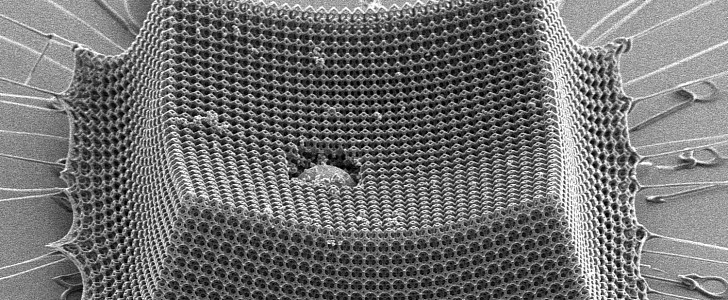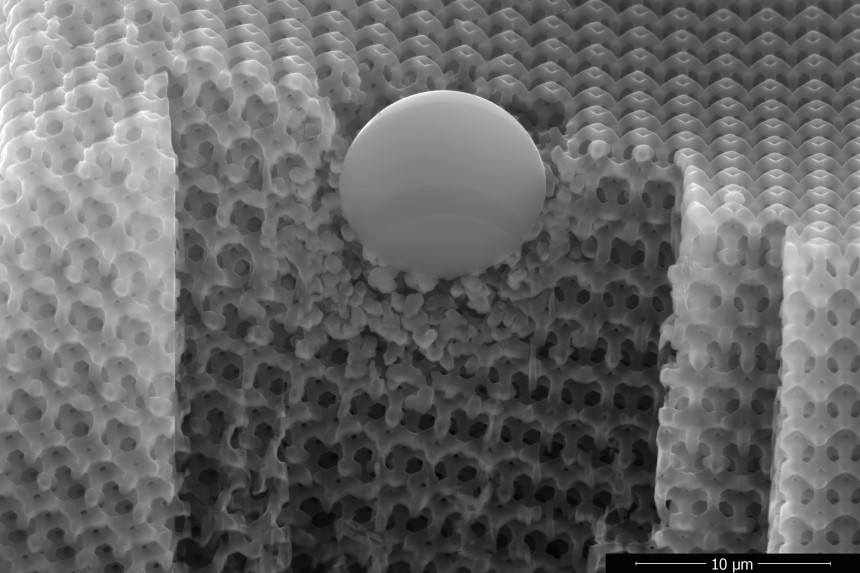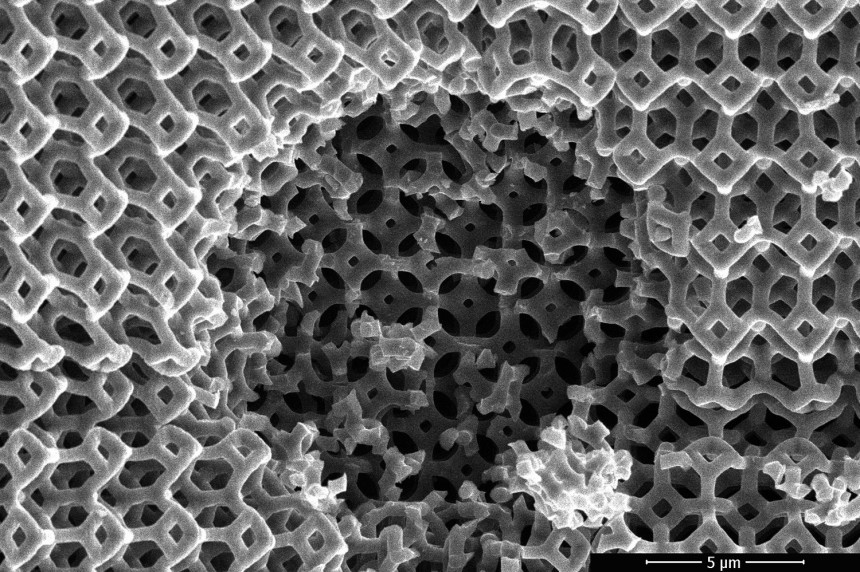So, nanotechnology. Amazing stuff really. So amazing in fact, that some researchers and engineers at Caltech, MIT, and ETH Zurich have discovered how to make lighter than Kevlar materials that can withstand supersonic microparticle impacts.
What does all this mean for material science? A whole lot if you ask me. I mean, this is literally going to change to way we produced shielding of any kind, especially for law enforcement agencies. Hang on a second, I'm getting a little ahead of myself here.
A new study by engineers at the above-mentioned institutes discovered that “nano-architected” materials are showing insane promise in use as armor. What are “nano-architected” materials? Simply put, they’re materials and structures that are designed from “precisely patterned nanoscale structures,” meaning that the entire thing is a pre-meditated and arranged structure; what you see is exactly what was desired.
Not only this, but the material is completed from nanoscale carbon struts. Arranged much like rings in chainmail, these carbon struts are combined, layer upon layer to create the structure you see in the main photo. So yeah, medieval knights had it right all along, they just needed more layers of something that already weighed upwards of 40 lbs for a full body suit.
So now that the researchers had a structure, what to do with it. Why not shoot things at it? Well, like any scientists, pardon me, “researchers,” that have been cooped up in a lab for too long, that’s just what they did, in the process, documenting and recording all the results.
To do this, researchers shot laser-induced microparticles up to 1,100 meters per second at the nanostructure. A quick calculation and you’re looking at a particle that’s traveling at 3,608 feet per second. Want to know more? That's 2,460 miles per hour!
Two test structures were arranged, one with slightly looser struts, and the second with a tighter formation. The tighter formation kept the particle from tearing through and even embedded into the structure.
If that’s not enough, and this is a big one, once the particle was removed and the underlying structure examined, researchers found that the surrounding structure remained intact. Yes, this means it can be reused.
The overall result? They found that shooting this structure with microparticles at supersonic speeds proved to offer a higher impact resistance and absorption effect than Kevlar, steel, aluminum, and a range of other impact-absorbing materials. The images in the gallery even show that particles didn’t even make it thirty percent of the way through the structure; I counted about six to seven deformed layers.
To get an idea of where this sort of tech will be taking things, co-author of the paper, Julia R. Greer of Caltech, whose lab led the material’s fabrication, says that “The knowledge from this work… could provide design principles for ultra-lightweight impact resistant materials [for use in] efficient armor materials, protective coatings, and blast-resistant shields desirable in defense and space applications.”
Imagine for a second what this means once these structures are created on a larger scale. It will change the face of armor, be it destined for human or machine use, coatings, and downright clothing. I’m not saying that suddenly we can stop bullets walking down the street, but it won’t be long until funding for large-scale production begins, and what I just said may become a reality. Maybe not for all people at first, but the military will definitely have their eye on this tech.
A new study by engineers at the above-mentioned institutes discovered that “nano-architected” materials are showing insane promise in use as armor. What are “nano-architected” materials? Simply put, they’re materials and structures that are designed from “precisely patterned nanoscale structures,” meaning that the entire thing is a pre-meditated and arranged structure; what you see is exactly what was desired.
Not only this, but the material is completed from nanoscale carbon struts. Arranged much like rings in chainmail, these carbon struts are combined, layer upon layer to create the structure you see in the main photo. So yeah, medieval knights had it right all along, they just needed more layers of something that already weighed upwards of 40 lbs for a full body suit.
To do this, researchers shot laser-induced microparticles up to 1,100 meters per second at the nanostructure. A quick calculation and you’re looking at a particle that’s traveling at 3,608 feet per second. Want to know more? That's 2,460 miles per hour!
Two test structures were arranged, one with slightly looser struts, and the second with a tighter formation. The tighter formation kept the particle from tearing through and even embedded into the structure.
If that’s not enough, and this is a big one, once the particle was removed and the underlying structure examined, researchers found that the surrounding structure remained intact. Yes, this means it can be reused.
To get an idea of where this sort of tech will be taking things, co-author of the paper, Julia R. Greer of Caltech, whose lab led the material’s fabrication, says that “The knowledge from this work… could provide design principles for ultra-lightweight impact resistant materials [for use in] efficient armor materials, protective coatings, and blast-resistant shields desirable in defense and space applications.”
Imagine for a second what this means once these structures are created on a larger scale. It will change the face of armor, be it destined for human or machine use, coatings, and downright clothing. I’m not saying that suddenly we can stop bullets walking down the street, but it won’t be long until funding for large-scale production begins, and what I just said may become a reality. Maybe not for all people at first, but the military will definitely have their eye on this tech.








